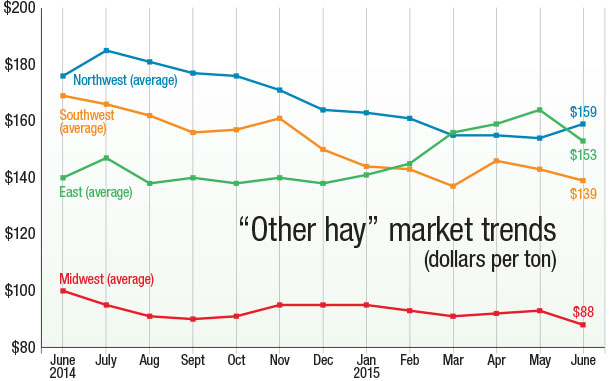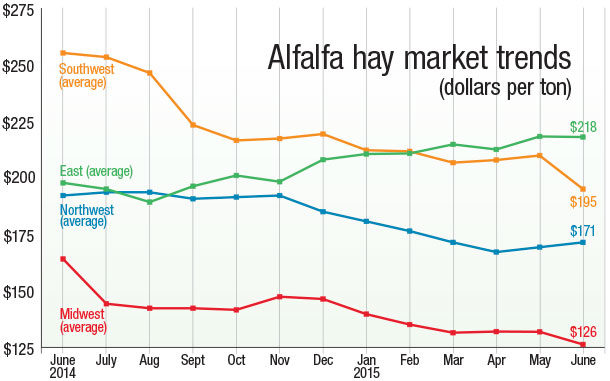There is a lot of speculation among hay growers, predicting hay prices will skyrocket due to the poor quality of hay made in the early spring and summer. However, prices aren’t moving much yet.
Weather
Well, whatever the weather is in your area, wait five minutes and it will change. The crop moisture index (short-term need versus available water in a shallow soil profile) in the West and Pacific Northwest indicates continued dry conditions impacting crops, now spreading to include Montana, Wyoming and parts of North Dakota. Eastern Oregon and Washington are experiencing a tough, dry growing season. Areas in the Southeast are also seeing severely dry conditions for crop moisture, from Texas through North Carolina. Much of the Corn Belt saw above-average temperatures that boosted the corn-silking process, even though it remains 3 percentage points below the same time last year.
Although an impending El Nino is expected to have more impact than in the past 50 years and bring relief, nonetheless, it hasn’t yet eased the extensive California and Nevada drought.
National issues
Milk prices remain flat for June, at $16.90 per hundredweight, with only a $.20 increase over May, while the June 2014 prices of $23.20 quickly fade into distant memory.
International issues
Milk production in the Eurozone continued to rise in May, taking advantage of their post-quota freedom. However, there is no sign that demand is rising quickly enough to absorb the extra milk, as reported by the Milk Producers Council.
Export reports by the USDA Foreign Agricultural Service in May show Japan leading as the destination country for “other hay” from the U.S. with 68,336 metric tons shipped, while China leads for importing U.S. alfalfa hay at 91,325 metric tons during the same period.
Dairy market report
The Milk Producers Council reported (PDF, 313KB) production updates: Milk production remains very strong in the Midwest, with output climbing 7.2 percent in Michigan and 3.4 percent in Wisconsin. Production slipped further in New Mexico (down 4.5 percent), California (down 4.3 percent), Oregon (down 3.2 percent) and Texas (down 2.1 percent). Ohio and Washington reported their first year-over-year declines in milk output in some time.
Charting hay prices
Hay markets vary widely by region and by product – alfalfa hay versus “other hay.” The prices and information in Figure 1 (alfalfa hay market trends) and Figure 2 (“other hay” market trends) are provided by the National Agricultural Statistics Service (NASS) and reflect general price trends and movements. Hay quality, however, was not provided in the NASS reports.

For purposes of this report, states that provided data to NASS were divided into the following regions:
Southwest – Arizona, California, Nevada, New Mexico, Oklahoma, Texas
East – Kentucky, New York, Ohio, Pennsylvania
Northwest – Colorado, Idaho, Montana, Oregon, Utah, Washington, Wyoming
Midwest – Illinois, Iowa, Kansas, Michigan, Minnesota, Missouri, Nebraska, North Dakota, South Dakota, Wisconsin FG











